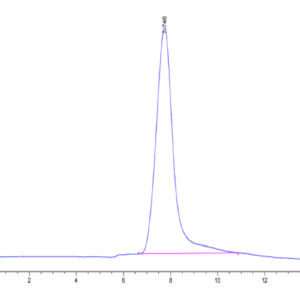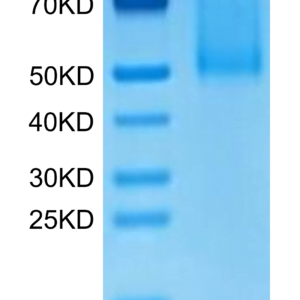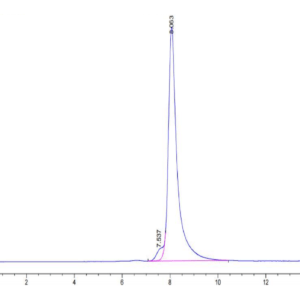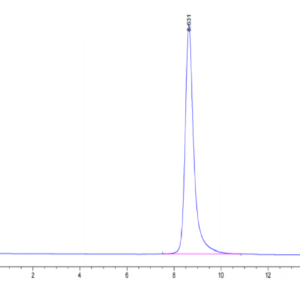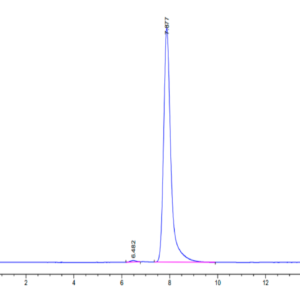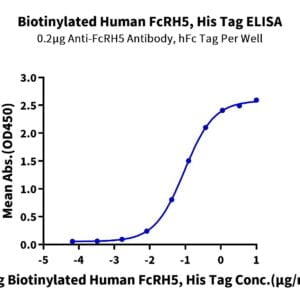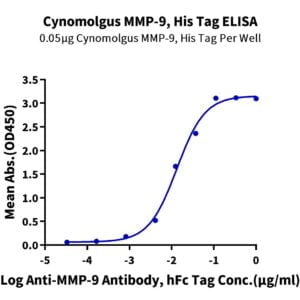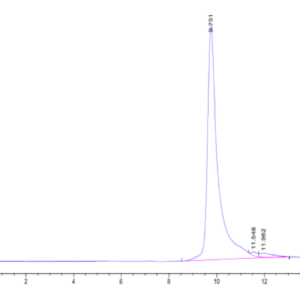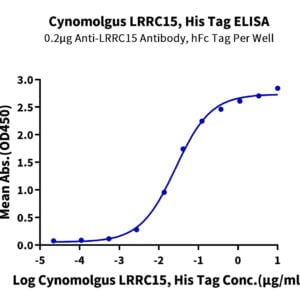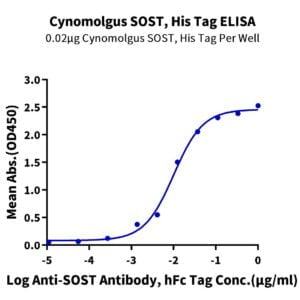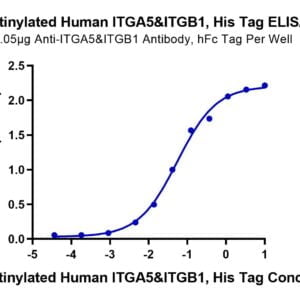| Weight | 1 lbs |
|---|---|
| Dimensions | 9 × 5 × 2 in |
| accession | Q04721 |
| express system | HEK293 |
| product tag | C-His-Avi |
| purity | > 95% as determined by Tris-Bis PAGE;> 95% as determined by HPLC |
| background | Human Notch 2 is a 300 kDa type I transmembrane glycoprotein that is one of four human Notch homologues involved in developmental processes. Although Notch proteins are structurally and functionally similar, deletion of either Notch-1 or Notch 2 is lethal, showing that not all functions overlap.Notch 2 functions as a receptor for membrane-bound ligands Jagged-1 (JAG1), Jagged-2 (JAG2) and Delta-1 (DLL1) to regulate cell-fate determination. Upon ligand activation through the released notch intracellular domain (NICD) it forms a transcriptional activator complex with RBPJ/RBPSUH and activates genes of the enhancer of split locus. |
| molecular weight | The protein has a predicted MW of 57 kDa. Due to glycosylation, the protein migrates to 68-78 kDa based on Tris-Bis PAGE result. |
| available size | 100 µg, 500 µg |
| endotoxin | Less than 1EU per μg by the LAL method. |
Human Notch 2 Protein 4654
$150.00 – $500.00
Summary
- Expression: HEK293
- Pure: Yes (HPLC)
- Amino Acid Range: Leu26-GIn530
Human Notch 2 Protein 4654
| protein |
|---|
| Size and concentration 100, 500µg and lyophilized |
| Form Lyophilized |
| Storage Instructions Valid for 12 months from date of receipt when stored at -80°C. Recommend to aliquot the protein into smaller quantities for optimal storage. Please minimize freeze-thaw cycles. |
| Storage buffer Shipped at ambient temperature. |
| Purity > 95% as determined by Tris-Bis PAGE |
| target relevance |
|---|
| Human Notch 2 is a 300 kDa type I transmembrane glycoprotein that is one of four human Notch homologues involved in developmental processes. Although Notch proteins are structurally and functionally similar, deletion of either Notch-1 or Notch 2 is lethal, showing that not all functions overlap.Notch 2 functions as a receptor for membrane-bound ligands Jagged-1 (JAG1), Jagged-2 (JAG2) and Delta-1 (DLL1) to regulate cell-fate determination. Upon ligand activation through the released notch intracellular domain (NICD) it forms a transcriptional activator complex with RBPJ/RBPSUH and activates genes of the enhancer of split locus. |
| Protein names Neurogenic locus notch homolog protein 2 (Notch 2) (hN2) [Cleaved into: Notch 2 extracellular truncation (N2ECD); Notch 2 intracellular domain (N2ICD)] |
| Gene names NOTCH2,NOTCH2 |
| Protein family NOTCH family |
| Mass 9606Da |
| Function Functions as a receptor for membrane-bound ligands Jagged-1 (JAG1), Jagged-2 (JAG2) and Delta-1 (DLL1) to regulate cell-fate determination. Upon ligand activation through the released notch intracellular domain (NICD) it forms a transcriptional activator complex with RBPJ/RBPSUH and activates genes of the enhancer of split locus (PubMed:21378985, PubMed:21378989). Affects the implementation of differentiation, proliferation and apoptotic programs (By similarity). Involved in bone remodeling and homeostasis. In collaboration with RELA/p65 enhances NFATc1 promoter activity and positively regulates RANKL-induced osteoclast differentiation (PubMed:29149593). Positively regulates self-renewal of liver cancer cells (PubMed:25985737). |
| Subellular location [Notch 2 extracellular truncation]: Cell membrane ; Single-pass type I membrane protein .; [Notch 2 intracellular domain]: Nucleus. Cytoplasm. Note=Following proteolytical processing NICD is translocated to the nucleus. Retained at the cytoplasm by TCIM (PubMed:25985737). |
| Tissues Expressed in the brain, heart, kidney, lung, skeletal muscle and liver. Ubiquitously expressed in the embryo. |
| Structure Heterodimer of a C-terminal fragment N(TM) and an N-terminal fragment N(EC) which are probably linked by disulfide bonds (By similarity). Interacts with MAML1, MAML2 and MAML3 which act as transcriptional coactivators for NOTCH2. Interacts with RELA/p65 (By similarity). Interacts with HIF1AN. Interacts (via ANK repeats) with TCIM, the interaction inhibits the nuclear translocation of NOTCH2 N2ICD (PubMed:25985737). Interacts with CUL1, RBX1, SKP1 and FBXW7 that are SCF(FBXW7) E3 ubiquitin-protein ligase complex components (PubMed:29149593). Interacts with MINAR1; this interaction increases MINAR1 stability and function (PubMed:29329397). Interacts with NOTCH2NL (NOTCH2NLA, NOTCH2NLB and/or NOTCH2NLC); leading to enhance Notch signaling pathway in a non-cell-autonomous manner (PubMed:29856954). Interacts with MDK; this interaction mediates a nuclear accumulation of NOTCH2 and therefore activation of NOTCH2 signaling leading to interaction between HES1 and STAT3 (PubMed:18469519). Interacts with MINAR2 (PubMed:32954300). |
| Post-translational modification Synthesized in the endoplasmic reticulum as an inactive form which is proteolytically cleaved by a furin-like convertase in the trans-Golgi network before it reaches the plasma membrane to yield an active, ligand-accessible form (By similarity). Cleavage results in a C-terminal fragment N(TM) and a N-terminal fragment N(EC) (By similarity). Following ligand binding, it is cleaved by TNF-alpha converting enzyme (TACE) to yield a membrane-associated intermediate fragment called notch extracellular truncation (NEXT) (By similarity). This fragment is then cleaved by presenilin dependent gamma-secretase to release a notch-derived peptide containing the intracellular domain (NICD) from the membrane (By similarity).; Hydroxylated by HIF1AN.; Can be either O-glucosylated or O-xylosylated at Ser-613 by POGLUT1.; Phosphorylated by GSK3. GSK3-mediated phosphorylation is necessary for NOTCH2 recognition by FBXW7, ubiquitination and degradation via the ubiquitin proteasome pathway. |
| Target Relevance information above includes information from UniProt accession: Q04721 |
| The UniProt Consortium |
Data
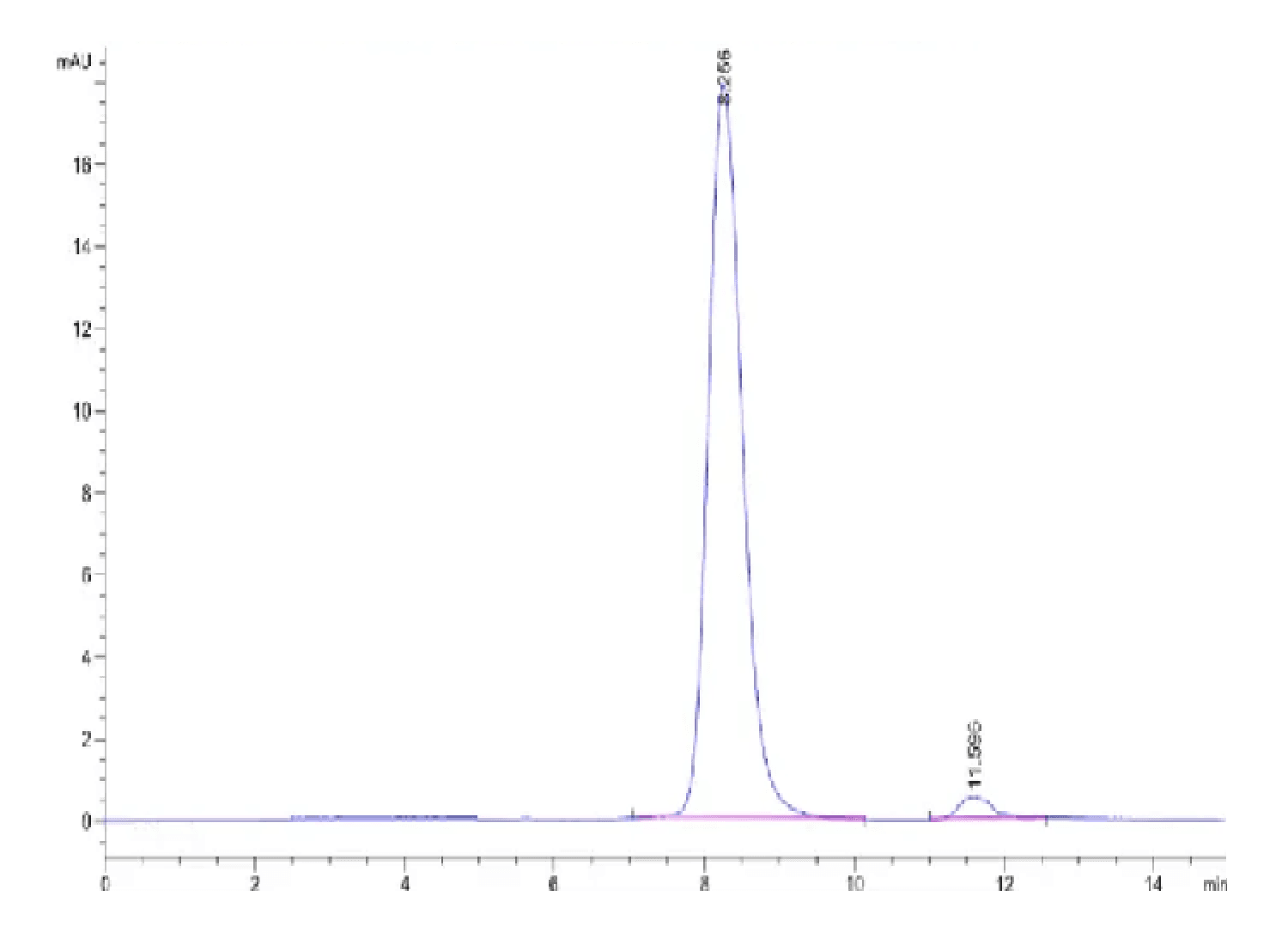 |
| The purity of Human Notch 2 is greater than 95% as determined by SEC-HPLC. |
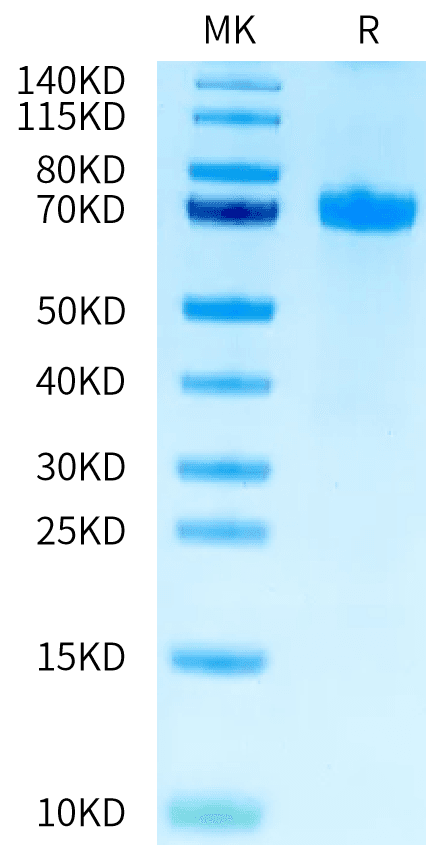 |
| Human Notch 2 on Tris-Bis PAGE under reduced condition. The purity is greater than 95%. |
Publications
Publications
| pmid | title | authors | citation |
|---|---|---|---|
| We haven't added any publications to our database yet. | |||
Protocols
| relevant to this product |
|---|
Documents
| # | ||
|---|---|---|
| Please enter your product and batch number here to retrieve product datasheet, SDS, and QC information. | ||
